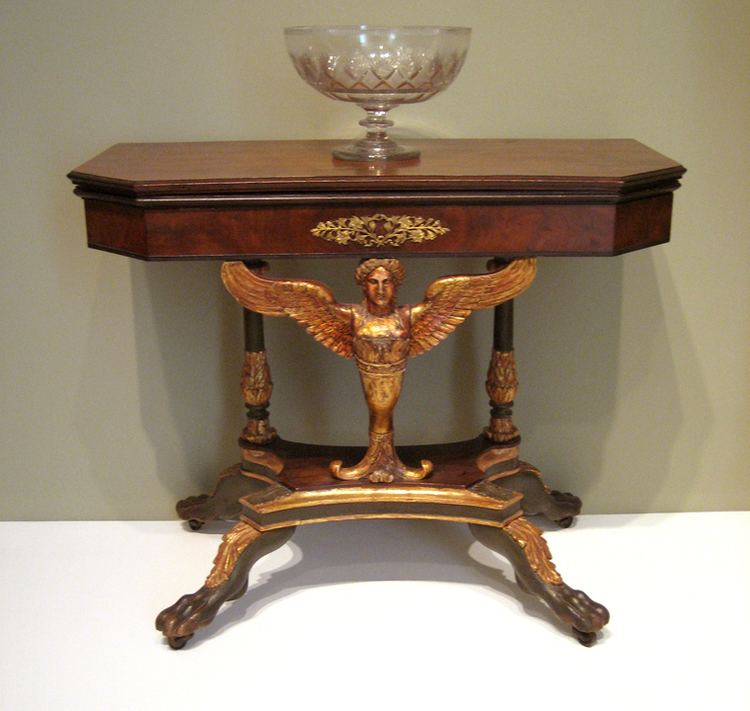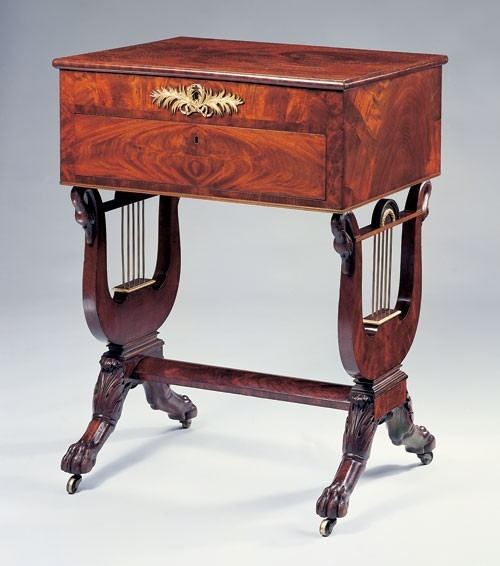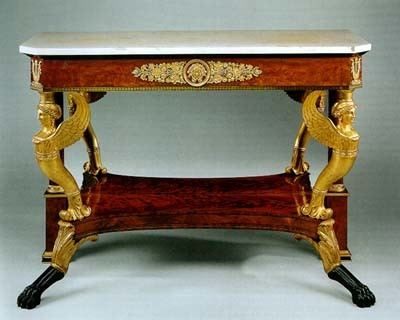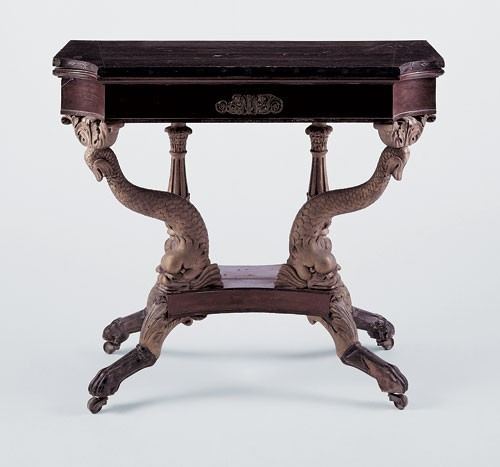Name Charles-Honore Lannuier | ||
 | ||
Charles honore lannuier empire furniture cabinetmaker
Charles-Honoré Lannuier, French-born American cabinetmaker (1779–1819), lived and worked in New York City. In Lannuier's time, the style of his furniture was described as "French Antique." Today his work is classified primarily as Federal furniture, Neoclassical, or American Empire.
Contents
- Charles honore lannuier empire furniture cabinetmaker
- Early life and influences
- Materials and decorative motifs
- Range of furniture
- References

Early life and influences

Charles-Honoré Lannuier was born outside of Paris in Chantilly, France, on June 27, 1779, son to Michel-Cyrille Lannuier, an innkeper, and his wife, Marie-Geneviève Malice. From childhood, Lannuier was influenced by his older brother, Nicolas-Louis-Cyrille Lannuier, and an uncle, Jean-Baptiste Cochois, successful cabinetmakers selling furniture in pre-Revolutionary Paris. Both relatives contributed to Lannuier's training as an ébéniste (furniture maker). The social unrest and disruption of the economy by the French Revolution caused Lannuier to emigrate to the young American republic in 1803. Though the French Revolution brought the disbandment of the furniture guilds, and the associated fashionable practice of labeling pieces with a maker's label, Lannuier continued that tradition in the U.S. despite its lack of guilds.
Materials and decorative motifs

In Paris, Lannuier worked primarily in mahogany, with limited amounts of satinwood and rosewood veneer inlays. Early pieces show the influence of late Louis XVI-style furniture. After moving to the United States, Lannuier benefitted from the more stable economy and access to exotic hardwoods, which allowed him to work on a larger scale using solid pieces of precious woods.

Lannuier's furniture is characterized by its use of architectural motifs–-columns, brackets, pediments, and pilasters; Greek and Roman motifs including anthemions, lyres, caryatids, dolphins, laurel wreaths, and winged figures. Federal motifs associated with the early Republic include eagles and five- or six-pointed stars. Large figures were carved and gilded, while smaller decorative mounts were cast in bronze and gilded.
Range of furniture
Lannuier's earlier work included sideboards, commodes, worktables, dining tables and chairs, and game tables. As the Empire style became more entrenched, and his success grew, Lannuier produced larger, more expensive pieces including sofas, cylinder desks, and bedsteads. While his pieces are considered within the Empire style, Lannuier's work is distinct for being more delicate and for recalling the refinment found in the Directoire style. Examples of Lannuier's furniture can be seen in the White House Red Room, the Albany Institute of History and Art, the Museum of Fine Arts, Boston, and New York's Metropolitan Museum of Art.
